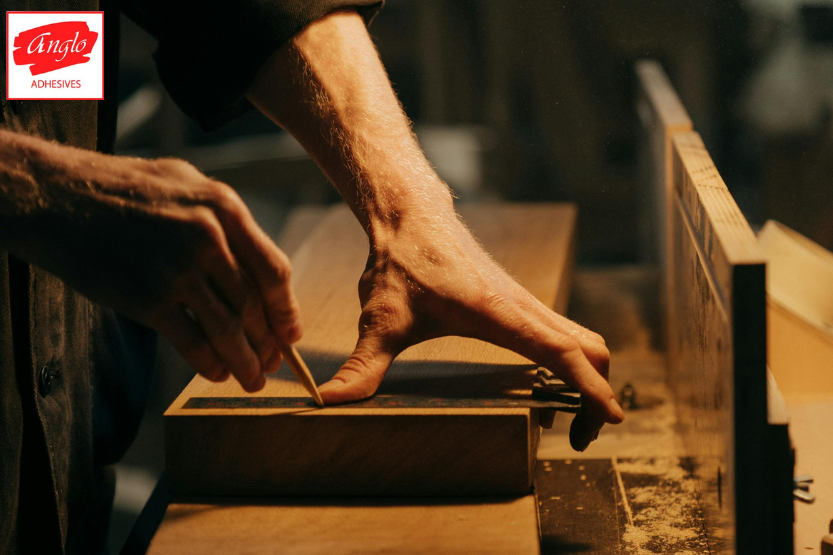Blog
Woodworking Adhesives for Manufacturing and Crafts: Explained

Woodworking adhesives are essential for any craftsperson, whether you’re a hobbyist or a professional carpenter. These adhesives serve as a binding agent that ensures the durability and longevity of wooden projects. Understanding the types, applications, and characteristics of these adhesives is crucial for achieving the best results in woodworking.
Types of Woodworking Adhesives
Understanding the different types of woodworking adhesives is crucial for selecting the right one for your project. The most common types include:
- PVA (Polyvinyl Acetate): Ideal for interior projects due to its strong bond and ease of use.
- Polyurethane: Versatile and suitable for various materials, making it perfect for outdoor applications.
- Epoxy: Known for its exceptional strength and resistance to environmental factors, ideal for heavy-duty uses.
Choosing the appropriate adhesive type is essential for project success. Each type serves distinct purposes, influencing the durability and effectiveness of your woodworking tasks.
The Importance of Choosing the Right Adhesive
Selecting the correct adhesive can significantly influence the outcome of a woodworking project. Key considerations include:
- Type of Wood: Different woods may require specific adhesives for optimal bonding.
- Environmental Conditions: Factors like humidity and temperature can affect adhesive performance.
- Intended Use: Understanding whether the final product is for indoor or outdoor use is crucial.
Choosing the right adhesive ensures a strong bond that meets the specific needs of your project. Consideration of wood type, environment, and intended use can enhance both durability and performance.
Application Techniques for Woodworking Adhesives
Proper application techniques are vital for achieving a strong bond. Important steps include:
- Preparation: Make sure surfaces are clean, dry, and devoid of dust or grease.
- Even Application: Use a brush or roller for uniform adhesive distribution on larger surfaces.
- Clamping: Clamp pieces together while curing to reduce gaps and ensure a tight bond.
Effective application techniques directly contribute to the success of your project. By following these steps, you can maximise adhesive performance and bond strength.
Common Mistakes to Avoid
Even experienced woodworkers can make errors when using adhesives. Common mistakes include:
- Excessive Adhesive Application: Applying too much can result in a messy finish and ineffective bonding.
- Inadequate Curing Time: Not allowing sufficient time for the adhesive to set can lead to weak joints.
Avoiding these mistakes can enhance the overall quality of your work. Properly managing adhesive quantity and curing times is essential for achieving reliable results.
How to Clean Up After Using Adhesives
Cleaning up after using woodworking adhesives is essential for maintaining an organised workspace. Key cleanup points include:
- Water-Based Adhesives: Typically cleaned with soap and water before they dry.
- Robust Adhesives: Require solvents like acetone for removal.
- Manufacturer Guidelines: Always follow specific cleaning recommendations to protect tools and surfaces.
Efficient cleanup practices are vital for a tidy and safe workspace. Adhering to recommended procedures ensures tool longevity and a clean environment.
Safety Precautions When Using Woodworking Adhesives
Safety is paramount when working with adhesives. Essential precautions include:
- Ventilation: Work in well-ventilated areas to minimise harmful inhalation.
- Protective Gear: Use gloves and masks to safeguard against chemical exposure.
- Safety Data Sheets: Familiarise yourself with the hazards associated with each adhesive.
Prioritising safety measures significantly reduces risks when handling adhesives. Awareness of hazards and protective practices is crucial for a safe working environment.
The Environmental Impact of Woodworking Adhesives
With increasing environmental awareness, the ecological impact of adhesives is a growing concern. Important aspects include:
- Eco-Friendly Options: Natural glues derived from plant sources are available as sustainable alternatives.
- Bonding Capabilities: These eco-friendly adhesives maintain strong performance while reducing harmful emissions.
Utilising environmentally friendly adhesives can support sustainable practices in woodworking. By choosing green options, woodworkers can minimise their ecological footprint.
Innovations in Woodworking Adhesives
The woodworking industry is continuously evolving with new adhesive technologies. Key innovations include:
- Water-Resistant Formulations: Enhanced performance for outdoor projects.
- Quick-Setting Options: Designed for time-sensitive tasks.
- Aesthetic Enhancements: Adhesives that enhance the natural beauty of wood.
Staying informed about these advancements allows woodworkers to select the most suitable products for their needs. Innovations in adhesive technology can improve efficiency and project outcomes.
Anglo Adhesives for Your Woodworking Needs
Understanding woodworking adhesives is essential for any woodworker aiming to achieve high-quality results. At Anglo Adhesives, we offer a range of premium woodworking adhesives tailored to your specific needs. Our products are designed for reliability, ease of use, and exceptional performance. Explore our selection today to find the ideal adhesive for your next woodworking project!